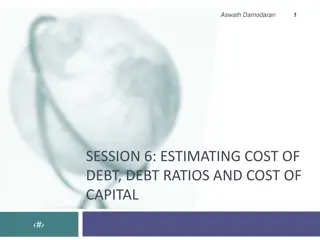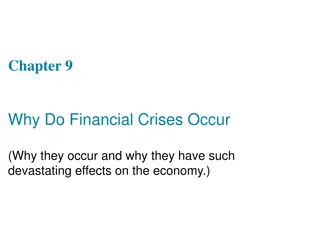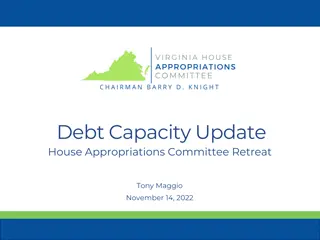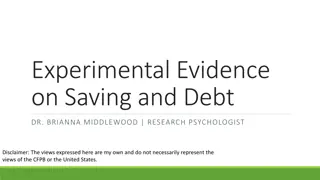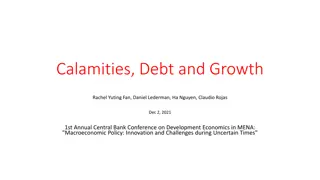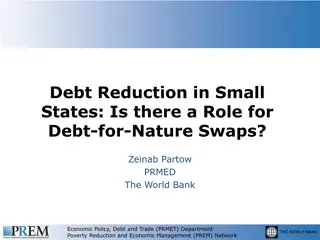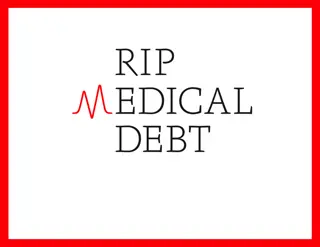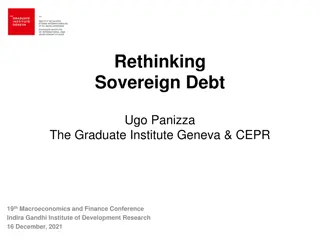Global Debt Crises: Risks and Causes
The risks of a new global debt crisis are explored, highlighting the causes such as rising inequality, financialization, and deregulation. The increasing total and public debt levels worldwide, coupled with private debt challenges, indicate a potential looming crisis. The aftermath of the previous financial crisis has set the stage for upcoming challenges requiring policy responses to address debt crises effectively.
Download Presentation

Please find below an Image/Link to download the presentation.
The content on the website is provided AS IS for your information and personal use only. It may not be sold, licensed, or shared on other websites without obtaining consent from the author.If you encounter any issues during the download, it is possible that the publisher has removed the file from their server.
You are allowed to download the files provided on this website for personal or commercial use, subject to the condition that they are used lawfully. All files are the property of their respective owners.
The content on the website is provided AS IS for your information and personal use only. It may not be sold, licensed, or shared on other websites without obtaining consent from the author.
E N D
Presentation Transcript
The risks of a new The risks of a new global debt crises global debt crises Bodo Ellmers, Eurodad 20 September 2018 Budapest
What What has caused has caused the last financial the last financial crisis? crisis? Rising inequality Rising inequality: The poor have to borrow to meet their needs, the rich have to invest the banks facilitate sub-prime lending. Financialization Financialization: Privatization of public goods such as health, housing, or education creates more needs to borrow, new asset classes and much more debt. Deregulation Deregulation: : USA and EU lifted restrictions on the financial sector financial institutions respond by shifting their business model to speculative activities.
Debt Debt is at all is at all- -time highs time highs
Total & Public debt Total & Public debt Total debt: - Worldwide debt (excluding financial debt) has reached US$164 trillion, equal to 225% of global GDP and up from a previous record of 213% in 2009. Public debt: - Advanced economies public debt has risen to 106.9% of GDP in 2017 - Greece expected to breach 190% this year, three times the debt level considered sustainable under the EU s Maastricht rules (Italy 129.7%; USA now way beyond 100% of GDP and rising) - Emerging economies crisis: Argentina already turned to the IMF, massive debt problems also in Brasil, Pakistan, Turkey etc. - Just 1 of 5 Low Income Countries is considered to be in low risk of debt distress Effects of debt 1990/2000s debt relief has been undone
Private debt Private debt Corporate debt globally has reached 66 trillion USD Boom of bond issuance everywhere: public and private, North and South, large share denominated in foreign currency. Especially in Asia bond issuance tripled from 62bn in 2017 to 191bn USD in 2018 Even in Low Income Countries the bond boom continues: high yields of up to 10% annually attract greedy investors and drain poor countries resources. This is driven by hot money from the USA, EU and Japan (quantitative easing) and by the banks who cashed in 23.3bn in commissions in 2017 for their services related to issuing bonds. The whole world economy is overleveraged: financial bubbles that are likely to burst in an new crisis
2. The response to the last (and still ongoing) 2. The response to the last (and still ongoing) financial crisis has paved the way for the next crises financial crisis has paved the way for the next crises
Solving debt crises: Policy options Solving debt crises: Policy options Growth (of GDP, wages, tax income) Austerity (reduce expenses for consumption) Inflation (inflation > interest rate = debt disappears over time) Bailout (delays defaults through provision of new liquidity) Debt relief or restructuring (reduces debt stock)
and which policy options have been chosen? and which policy options have been chosen? Mix of austerity and bailout has been chosen, the first depresses GDP growth, the second increases debt levels No surprise that debt/GDP ratios have been rising! QE was supposed to boost inflation and growth but this failed, also due to lack of capital controls. It rather triggered a tsunami of capital flows to the global south. Growth and debt restructuring have not been chosen there was no deleveraging, no reduction of overall debt/GDP-ratios
Private debt went public Private debt went public the bank the bank bailouts bailouts
3. History repeats itself? The current cycle is similar 3. History repeats itself? The current cycle is similar to the one that triggered the 1980s debt crises to the one that triggered the 1980s debt crises
The debt cycle The debt cycle Excessive savings and sluggish growth in some countries lending boom to deficit countries rising debt levels debt crises Debt services costs are rising they increasingly absorb scarce official development assistance and tax income Developing country debt payments increased by 60% between 2014 and 2017. Public spending is being reduced, is crowded out by debt payments IMF and other IFIs have not learned lessons from the past: They prioritize bailout lending, with austerity conditions attached, over debt restructuring The next lost decade might be at the doorstep these are not so good prospects for the Sustainable Development Goals!
4. Where will the next crisis start 4. Where will the next crisis start? ? Corporate debt? Extremely high leverage, including in China and Latin America Financial sector debt? Too-big-too-fail has not been resolved since last crises, concentration process has continued, QE keeps zombie banks alive China? extremely high private debt levels and contingent liabilities, spillover to the global south would be dramatic Italy? high sovereign debt to GDP, gross financing needs of 40.7% of GDP, lots of non-performing loans the return of the Euro crisis? USA? Will the Fed s interest rate decisions in combination with Trump s tax reform take the whole world economy down (rising USD interest is highly problematic for all USD borrowers, especially developing countries). US fiscal deficit is expected to rise to 6% of GDP by 2019, due to the tax cuts vacuum cleaner Emerging economies? Argentina is already in crises What about the poorest countries? First cases of default already. Chad, Mozambique etc. LICs crises are more collateral damage of the debt system, a victim of policy decisions taken elsewhere in the debt system.
Surging debt after the crisis Surging debt after the crisis
5. Which 5. Which way to go way to go the need for reforms: the need for reforms: Prevention of crises: - More reliance on financing instruments that do not create new debts (tax, development assistance, equity etc) - Responsible Lending: Financing instruments that reduce default risks (GDP-linked bonds; state-contingent lending) Resolution of crises: - Debt relief/restructuring (deleveraging) must become the first or at least a more prominent policy option - Better institutions to make this possible are needs (debt workout mechanism)








